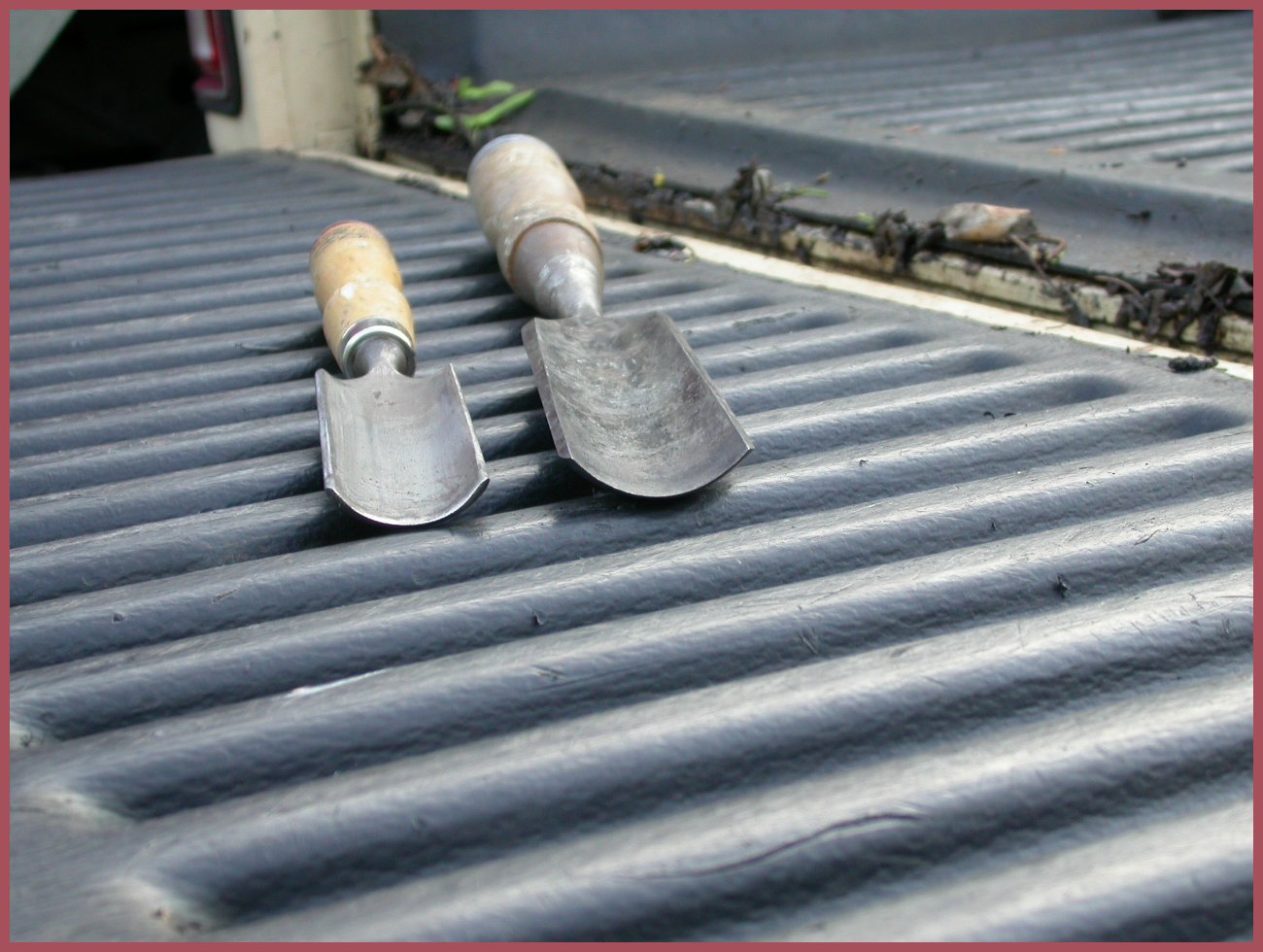

Source Page 150 SHIGO MODERN ARBORICULTURE
 Wounds
and Scribing
Wounds
and Scribing
Scribing wounds is a health treatment. Wounds [1] should be scribed
as shallow as possible and enlarged as little as possible [2]. No need to
scribe in the form of a vertical ellipse. Do not point tips. Make
rounded margins. If callus has started to from, remove injured bark
without disrupting callus. Always remove injured bark and wood.
Do not dig into the face of the wound. Clean soil and debris from the
wound surface. Do not paint! Check the wound in a few months and cut
away bark that may have died beyond the scribed area.
When wounds are inflicted during the growing season, wait until callus
begins to form. Then cut away the injured bark carefully so as not to
injure the callus. On shallow wounds inflicted during the growing season,
it is possible to generate new tissues on the wound face if moist moss is
applied within hours of injury. The moss should be held in place by
plastic wrap. The treatment is more effective in warm climates.
Remember - Trees seal, not heal, wounds. There are no data to show that wound dressings prevent or stall decay. When a tree is wounded, you should not treat only the wound but the entire tree.


Dictionary MAIN
PAGE
Text & Graphics Copyright © 2007
Keslick & Son Modern Arboriculture
Please report web site problems, comments and words of interest,
not found.
Contact